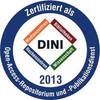Preview |
PDF, English
Download (122MB) | Terms of use |
Abstract
This dissertation enhances the precision and stability of the Heidelberg fluid inclusion water stable isotope analytical setup through technical optimization, and identifies major sources of analytical uncertainty in fluid inclusion water isotope measurements through international interlaboratory comparisons. Building on these improved measurement techniques and using multi-proxy stalagmite reconstructions, it also investigates the coupling between natural and anthropogenic factors in hydrological and environmental changes in the Asian monsoon region during the mid- to late Holocene, and deepens the understanding of hydrological evolution mechanisms within this region since the last glacial period.
Methodologically, this dissertation evaluates isotopic deviation trends in low-volume water (<0.5 μl) sample measurements using the Heidelberg fluid inclusion measurement line and develops correction protocols. Optimizations in measurement procedures, data processing, and glass tube encapsulation techniques significantly reduce isotopic fractionation during heating, improving both measurement efficiency and accuracy. In cold-water coral applications, dissertation quantifies δ18O and δ2H fractionation under varying heating conditions, identifying exchangeable water reservoirs in coral skeletons that complicate the interpretation of original isotopic signatures. An international interlaboratory comparison involving 13 laboratories was conducted to evaluate the accuracy and limitations of fluid inclusion water stable isotope measurements.The results indicate that the accuracy and reproducibility of isotopic measurements are significantly better at larger water volumes (1 µl and 0.5 µl), while measurements at volumes below 0.5 µl exhibit increased uncertainty, underscoring the ongoing technical challenges in low water volume isotopic analysis.
For paleoclimate reconstruction, this dissertation establishes about 120 ka BP (ka = thousand years; BP = before present, where “present” is defined as 1950 CE) hydrological history for southwest China using speleothem δ18O, δ13C, trace elements, and fluid inclusions δ18O and δ2H records. The δ18O and δ2H records from speleothem fluid inclusions during the mid- to late Holocene reveal that regional hydroclimate was influenced by a combination of natural (El Niño–Southern Oscillation) and anthropogenic activities, including agricultural development and population movements. During the last glacial period, Northern Hemisphere summer insolation intensity was identified as the primary control on phase variations in the regional hydrological environment and monsoonal precipitation, with global ice volume modulating the amplitude of hydrological responses to insolation changes.
| Document type: | Dissertation |
|---|---|
| Supervisor: | Frank, Prof. Dr. Norbert |
| Place of Publication: | Heidelberg |
| Date of thesis defense: | 9 July 2025 |
| Date Deposited: | 14 Jul 2025 12:53 |
| Date: | 2025 |
| Faculties / Institutes: | Fakultät für Chemie und Geowissenschaften > Institut für Geowissenschaften The Faculty of Physics and Astronomy > Institute of Environmental Physics |
| DDC-classification: | 500 Natural sciences and mathematics 530 Physics 550 Earth sciences |
| Controlled Keywords: | Fluid Inclusions, Stable Isotope, Asian Summer Monsoon |
| Uncontrolled Keywords: | Speleothems, Regional hydrological environment, Last Glacial Period, Holocene, Human Activity |









